How to Make DIY Sensory Rugs to Stimulate Your Baby’s Development
Descubra las maravillas del desarrollo sensorial de su pequeño con una alfombra sensorial casera de intervención temprana. Estas creaciones atractivas y táctiles brindan una rica experiencia sensorial que puede ayudar en el desarrollo temprano de su bebé. Explore el artículo siguiente para aprender cómo crear su propia alfombra sensorial y despertar los sentidos de su hijo.
Materials Needed
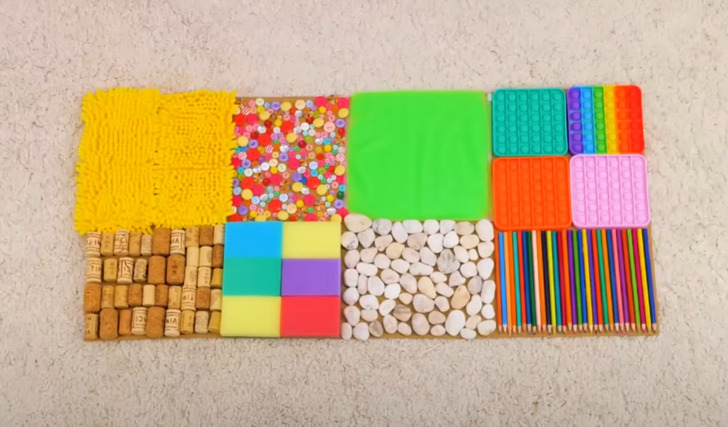
- Cardboard or rug base: If you choose the rug, start with a soft, durable rug that will serve as the base for your sensory rug large enough for your baby to comfortably lie or sit on.
- Textured Fabrics: Collect an assortment of textured fabrics, such as fleece, satin, corduroy, velvet, and faux fur.
- Ribbons: Different textured ribbons with different widths, patterns, and colors can be attached to the rug.
- Zippers: You can sew small fabric pockets or pouches onto the rug and insert zippers or Velcro closures for tactile exploration.
- Buttons: Secure colorful, child-safe buttons onto the rug, allowing your baby to feel and manipulate them.
- Crinkly Material: Add some crinkly fabric or plastic sheets to create an auditory sensory element.
- Mirrors: Attach unbreakable baby-safe mirrors to the rug for visual stimulation.
- Soft Toys: Sew or attach soft, washable toys to the rug for babies to explore.
- Feathers: Glue soft feathers to pieces of fabric and attach them to the rug.
- Bells or Rattles: Sew or glue small bells or rattles to sections of the rug for auditory stimulation.
- Foam Shapes: Include foam shapes with various textures that babies can touch and explore.
1. Lay out the cardboard or rug base on a flat surface, ensuring it is clean and free from debris
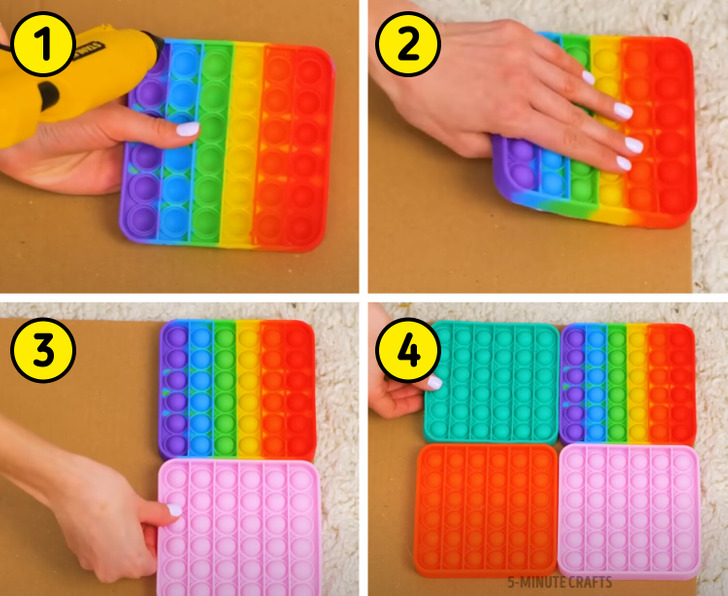
2. Begin attaching the textured fabrics, ribbons, zippers, buttons, crinkly material, mirrors, soft toys, feathers, and foam shapes to the fabric or rug using child-safe glue
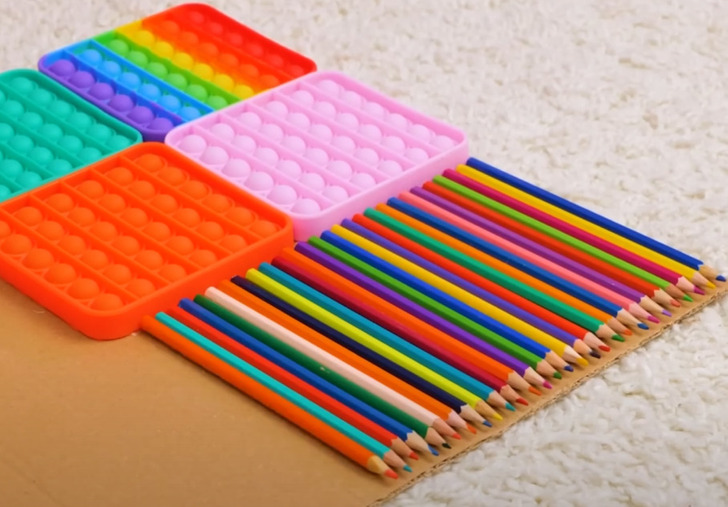
3. Arrange the sensory elements in an appealing and balanced manner, spreading them across the rug’s surface
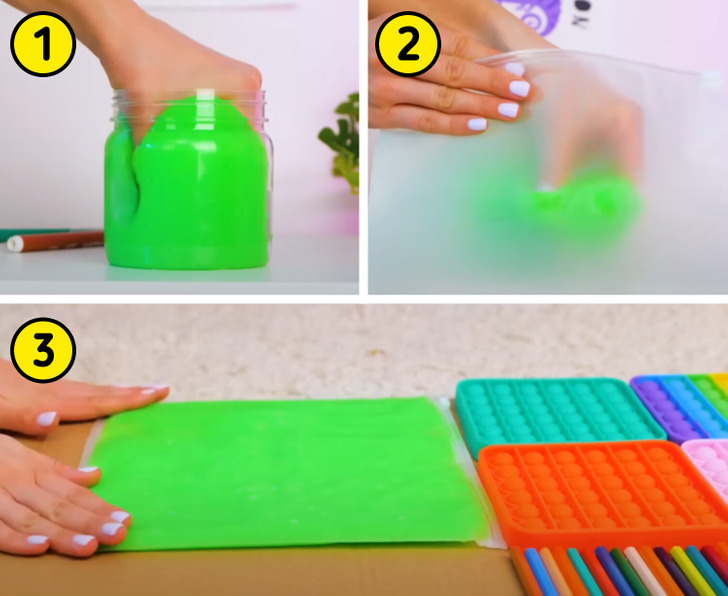
4. Ensure that all items are securely attached and cannot be easily pulled off by the baby
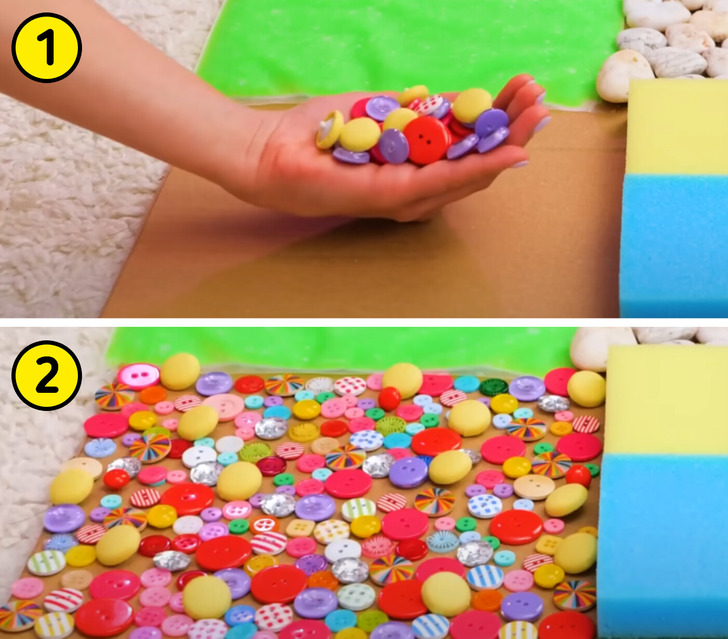
5. Allow any glue to dry completely before using the sensory rug
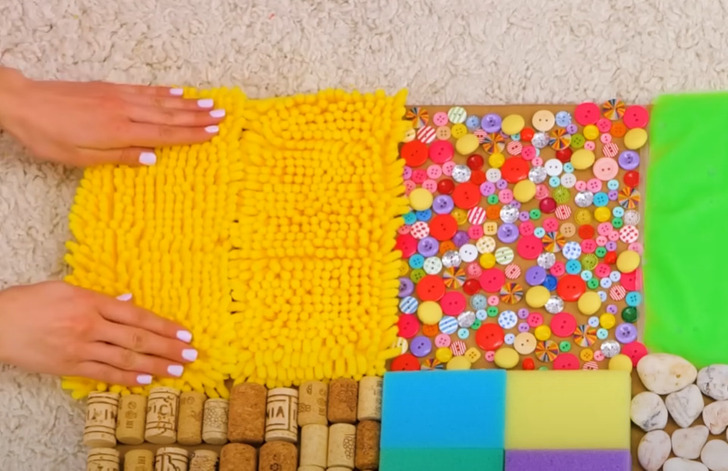
6. Place your baby on the rug and watch as they engage with textures, colors, and sounds, stimulating their senses and aiding in their developmental journey
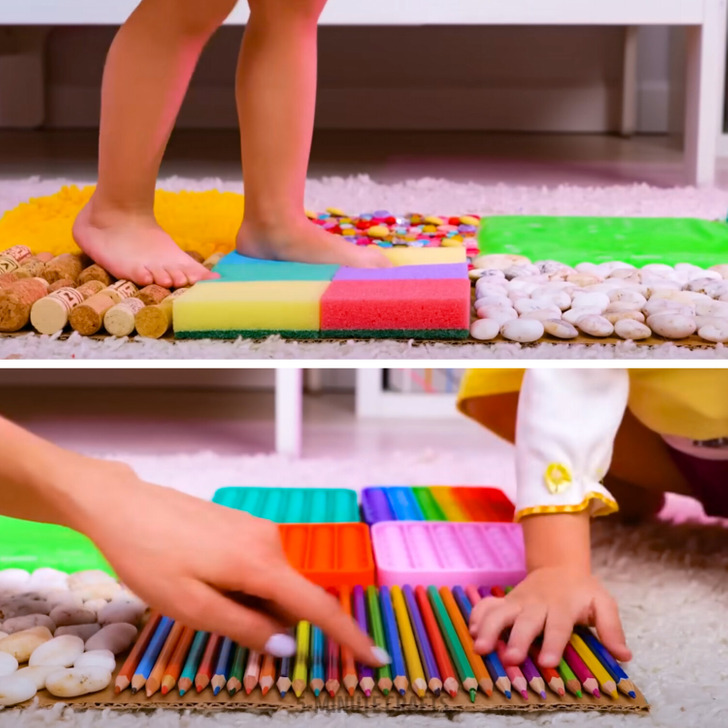
Check out more positive parenting hacks and crafts
Share This Article